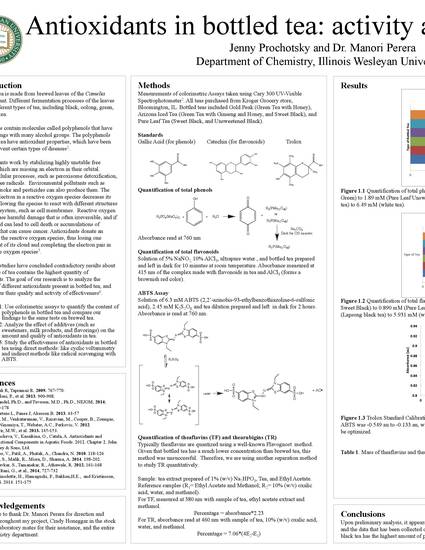
Bottled tea is made from brewed leaves of the Camelia sinensis plant. These leaves contain molecules called polyphenols that have aromatic rings with many alcohol groups. Different fermentation processes of the leaves lead to different types of tea, including black, oolong, green, and white tea. The polyphenols present in bottled tea have antioxidant properties, which have been seen to prevent certain types of diseases. Antioxidants work by stabilizing highly unstable free radicals, which are missing an electron in their orbital. Different studies have concluded contradictory results about which type of tea contains the highest quantity of antioxidants. There has been limited research in the activity of antioxidants in commercially brewed tea. The goal of our research is to analyze the quantity of different antioxidants present in bottled tea, and then analyze their effectiveness by examining their activity. Quantification is conducted with UV-Vis Photospectrometry to look at the total polyphenol content as well as individual classes of compounds. Reactivity is conducted to mimic a cellular response to the presence of a radical when there are polyphenols present, and to oxidize the polyphenols to measure their capacity for oxidation.
Available at: http://works.bepress.com/manori_perera/10/
